Creem has risen: A once-extinct rock magazine is on a quest to make itself vital again
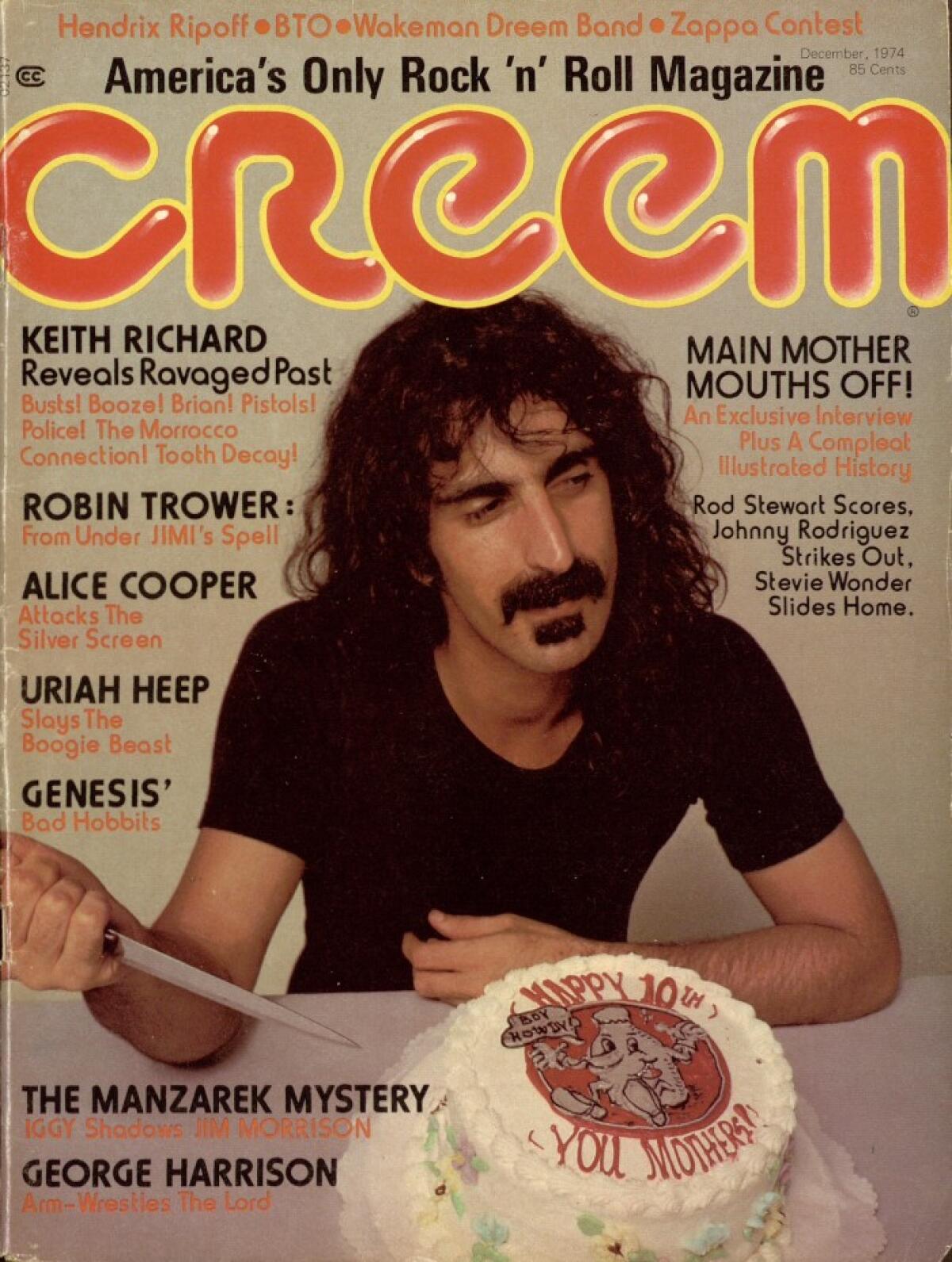
- Share via
For J.J. Kramer, the quest to resurrect the notorious rock magazine Creem was a lifetime goal that was always just out of reach.
He was 4 years old in 1981 when his father, publisher Barry Kramer, died of a drug overdose and left Creem to the preschooler soon listed on the masthead as “chairman.” His mother, Connie, took over running the magazine for several years. But when financial issues finally forced her to sell, the younger Kramer promised himself that one day he’d get it back.
Now, after decades of false starts and two lawsuits, Creem is back in action as a subscription-only quarterly with an active online presence. It lands this month as a sophisticated, large-format publication that is both contemporary and true to Creem’s original flavor, without slipping into nostalgia for the rock ‘n’ roll past.
Days before the debut printed magazine began hitting subscriber mailboxes in early September, Creem posted video of it rolling off the presses. “It was a surreal moment for me,” said Kramer, whose day job is attorney and global head of intellectual property for the clothing company Abercrombie & Fitch. “I’d be lying if I told you I didn’t get a little choked up over it.”
Jaan Uhelszki, who began as a staffer at the Detroit-based magazine in the early 1970s and is now the consulting editor emeritus, has remained close to Kramer his entire life and describes him as “a man with an obsession and a dream, a guy who is looking for his dad.”
It comes after multiple failed attempts to bring Creem back, with occasional signs of life that were seen as newsworthy often enough to inspire coverage in major news publications. This time, Creem is a fully funded, fully staffed operation, with plans to eventually expand beyond the printed magazine, which Kramer called “the beating heart of what we do.”
Creem is the latest music brand from the 1970s and ’80s to come back as a media platform in the digital age. In 2020, Creem’s onetime print rival Hit Parader returned as a production studio for television, film and live events. Even the defunct record store chain Licorice Pizza is back as a boutique in Studio City, inspired by last year’s acclaimed feature film of the same name, and, for the first time, as an indie record label, issuing a 30th-anniversary edition of L7’s grungy “Bricks Are Heavy.”
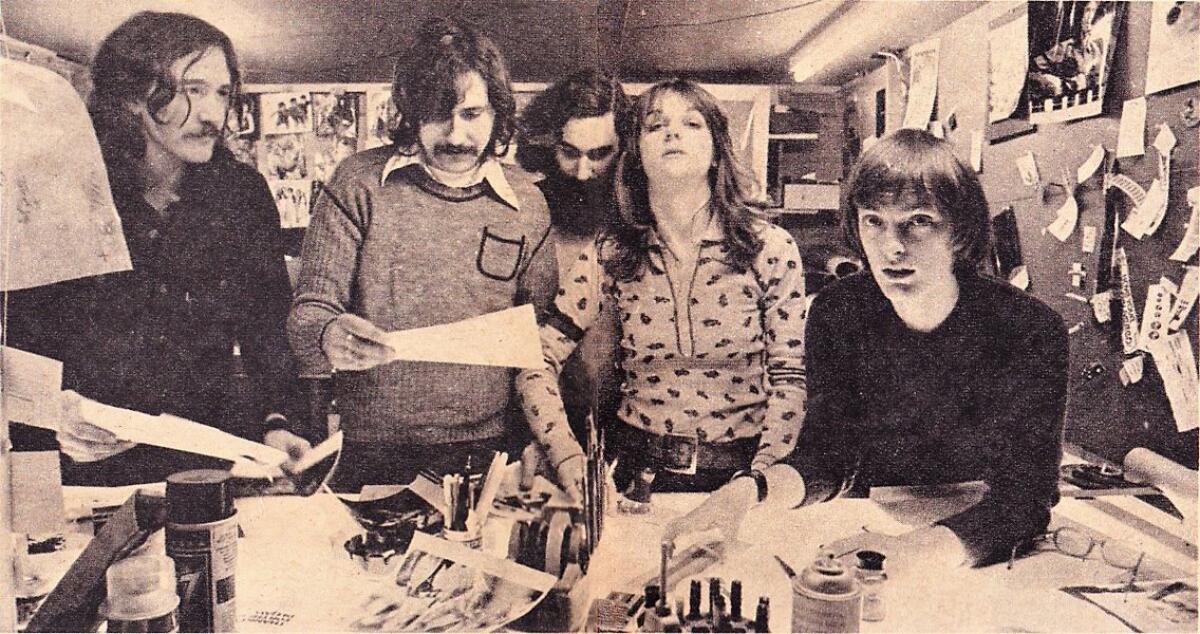
Founded in 1969, Creem at its best was the blunt, hilarious alternative to Rolling Stone, calling itself “America’s only rock ’n’ roll magazine.” It was fueled in part by a dynamic music scene in working-class Detroit, which already had Motown but also revolutionary acts like Iggy and the Stooges and the MC5, plus muscular roots rockers Bob Seger and Mitch Ryder & the Detroit Wheels.
Reviews and profiles could be perceptive or merciless, written by what Kramer called “a murderer’s row of incredible journalists who went on to do really amazing things,” including the marquee bylines of Lester Bangs, Dave Marsh, Susan Whitall, Nick Tosches, Richard Meltzer and a teenage Cameron Crowe.
Before her breakthrough as a recording artist and ’70s punk priestess, Patti Smith contributed modern poetic essays on Dylan, Jagger, Morrison and other Dionysian rock gods. Robert Christgau’s influential, biting “Consumer Guide” appeared monthly.
“There were so many fine people, you couldn’t turn in drivel. They would laugh at you,” recalled Uhelszki. “We used to fight about music constantly. There were always fistfights. People were throwing things through windows. It was not the most peaceful or sanest job I ever had. We created something out of that. Maybe the tension was good.”
The magazine stopped publishing in 1989, and then rights to the name changed hands for years as various underfunded attempts to bring Creem back failed. (A short-lived version launched by Marvin Scott Jarrett in 1990 shared certain characteristics with the old Creem but was more of a precursor to his Ray Gun magazine.) Since 2017, Kramer has been chairman and controlling shareholder of the brand.

The resurrection began with a celebrated 2019 documentary, “Creem: America’s Only Rock ’N’ Roll Magazine,” directed by Scott Crawford and streaming on AppleTV, that told the story of the magazine’s pugnacious rise from Detroit and its peculiar voice. It was a scrappy operation but successful enough that Billboard offered to buy the magazine for $1 million at the end of the ’70s, Kramer was told.
While some of the bylines have been known to music aficionados for years, a major revelation of the documentary was the lesser-known story of founder and publisher Barry Kramer, who was possibly the most unpredictable of them all. He wasn’t merely a businessman behind the scenes but an integral part of gathering talent and creating a voice.
“I kind of view him almost like a mad scientist or chemist in a way,” his son said via Zoom from Columbus, Ohio. “He knew how to put people together in a way that would sometimes be combustible, but he knew it would be combustible in a way that would create something really special.”

Footage uncovered for the documentary provided the younger Kramer only the second opportunity to hear his father’s recorded voice. The film was largely funded through a Kickstarter campaign, and through sales of Creem T-shirts and other merchandise featuring the “Boy Howdy” cartoon mascot designed by Robert Crumb. These offerings quickly revealed an audience waiting for Creem. Access to the magazine’s complete archive online followed.
With the first issue now in circulation, three of the magazine’s principals hosted a screening of the documentary Sept. 21 at the Grammy Museum in Los Angeles, where a crowd of young followers and original readers watched the story unfold again: the fistfights over content, the parties and brilliant prose, the time Uhelszki joined KISS onstage in black tights and the band’s kabuki makeup. (Headline: “I Dreamed I Was Onstage With Kiss in My Maidenform Bra.”)
In a Q&A after the film, Uhelszki, Kramer and editorial director Dave Carnie took questions about Creem past and present. One woman wanted to donate her boxes of old Creem issues. Another fan asked: Can I write for you? (“Yes!” said Carnie.) A young woman described finding the vintage magazines at flea markets and antique shops, and wondered how they knew 2022 was the right time to bring it all back.
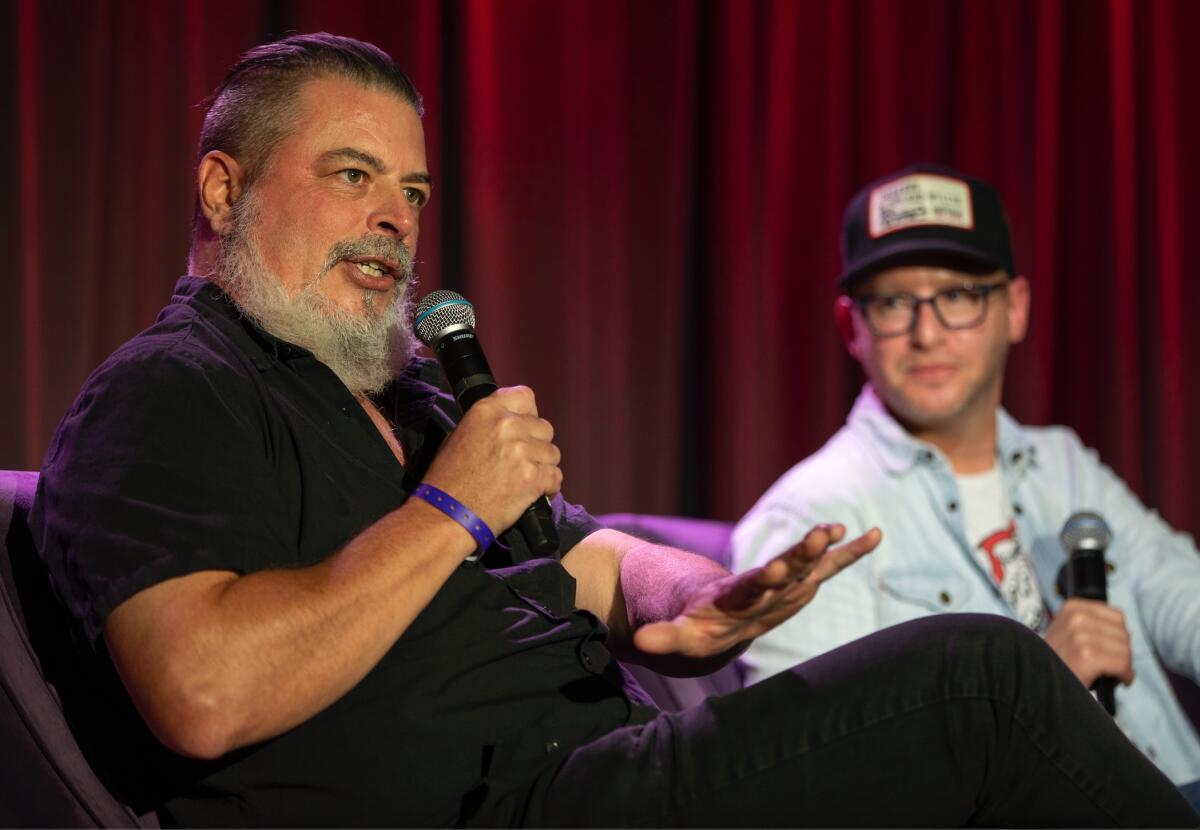
Carnie smiled, his beard gray and full, and said with a laugh into his microphone: “It’s because J.J. actually just got the rights to the magazine. There’s absolutely no timing at all at this. It just took him forever to get it and now he’s running with it.”
After the panel, Kramer mingled with the crowd in the lobby outside the Grammy Museum theater, wearing a Creem “Boy Howdy” T-shirt. In the morning, he would be meeting with Creem’s L.A. staffers, but this was an early chance to hear people react to his lifetime project.
“It feels validating now. It’s been a long road,” he said, describing years of conflicts and untangling of rights, and “getting knocked down so many times. To be holding it now … it’s insane.”
For the reborn magazine, Kramer asked Uhelszki to handle “quality control,” to be the arbiter of what was and wasn’t Creem — the voice, the attitude, the raw sense of humor. She sent a lot of pieces back for rewrites or to the trash pile. “I wasn’t making a lot of friends,” she said with a smile.
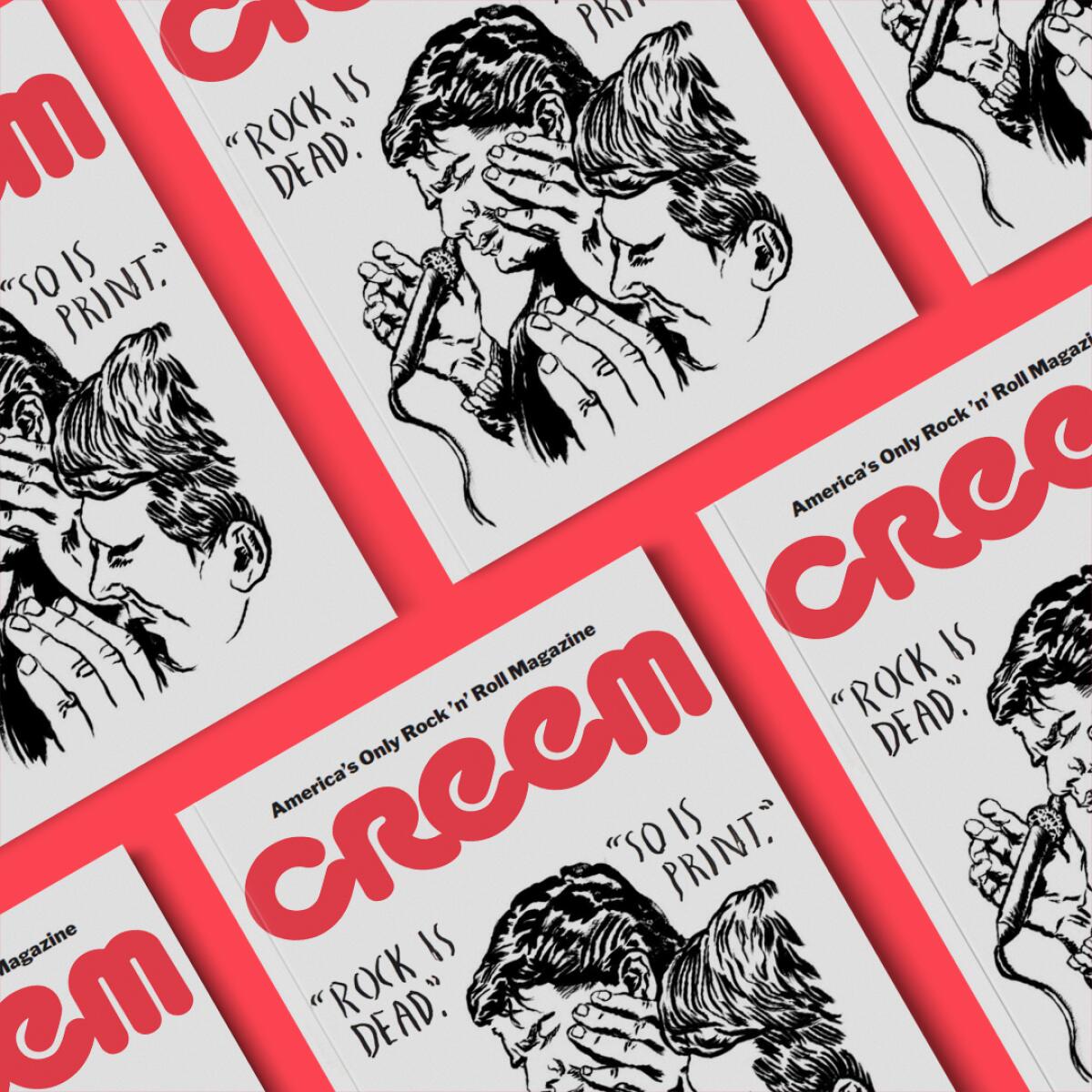
On the cover of the reborn Creem’s first issue is a black-and-white drawing by iconic artist Raymond Pettibon that includes the words “Rock is dead” and “So is print.” It’s an ironic message for an old magazine that hopes to tap into an audience ready for what Creem can be in 2022.
“We’re not trying to be Rolling Stone,” Kramer said. “We’re trying to be exactly who we are, and that’s the people’s music magazine.”
Music journalist Dave DiMartino, who was the editor of Creem for several years before leaving in 1986 for Billboard and beyond, said he’s impressed with the first issue. “A lot of the writing was really very good and I commend them for that,” said DiMartino, who was not involved in the magazine’s rebirth. “They’re going to rise and fall on the quality of the writing, the quality of the look and establishing a kind of attitude that doesn’t seem out of date — in an era that is pretty much post-cynicism, modern.”
While rock isn’t dominating the charts as it did in Creem’s early years, it remains a vibrant genre with a large audience, inspiring a new generation of artists to create music as compelling as anything from the past. The magazine aims to capture the attention of the same young music fanatics in that audience, and those who might gravitate toward vinyl or cassettes.
A commemorative issue marking Creem’s 50th year, collecting several old articles, sold out its first printing, then a second. There seemed to be a hunger out there for printed matter. In coming years, if things go well, there could be Creem-sponsored live events, podcasts, television productions, a Creem festival in Detroit.
“We’re trying to create this big-tent rock ’n’ roll community, and a big part of that community is a younger demographic,” added Kramer, who called the magazine an analog antidote to oversaturation of mediocre digital media. “What we want to do is build the most engaged audience in rock ’n’ roll.”
The new Creem is rooted in the same rebellious, contrarian attitude as in its heyday, with serious music journalism mixed with off-the-wall ideas. In the first issue, editorial director Carnie dedicated a page to his bizarre proposal to interview Iggy Pop while they sit together in a bubble bath. He included diagrams to illustrate potential positions in their shared tub. Pop didn’t respond to his proposal.
Carnie was born in 1969, the same year that Creem launched, so he was too young to be aware of the magazine in its ’70s heyday, or “know the difference between ABBA and AC/DC.” But his past as editor in chief of the subversive skateboard magazine Big Brother required a similar bad attitude and sense of humor. (He once interviewed the thrash metal originators Slayer at Disneyland.)
“It’s a weird balance of trying to be respectful of the magazine that it was but also make a product that in 2022 is attractive,” he said of his mission.
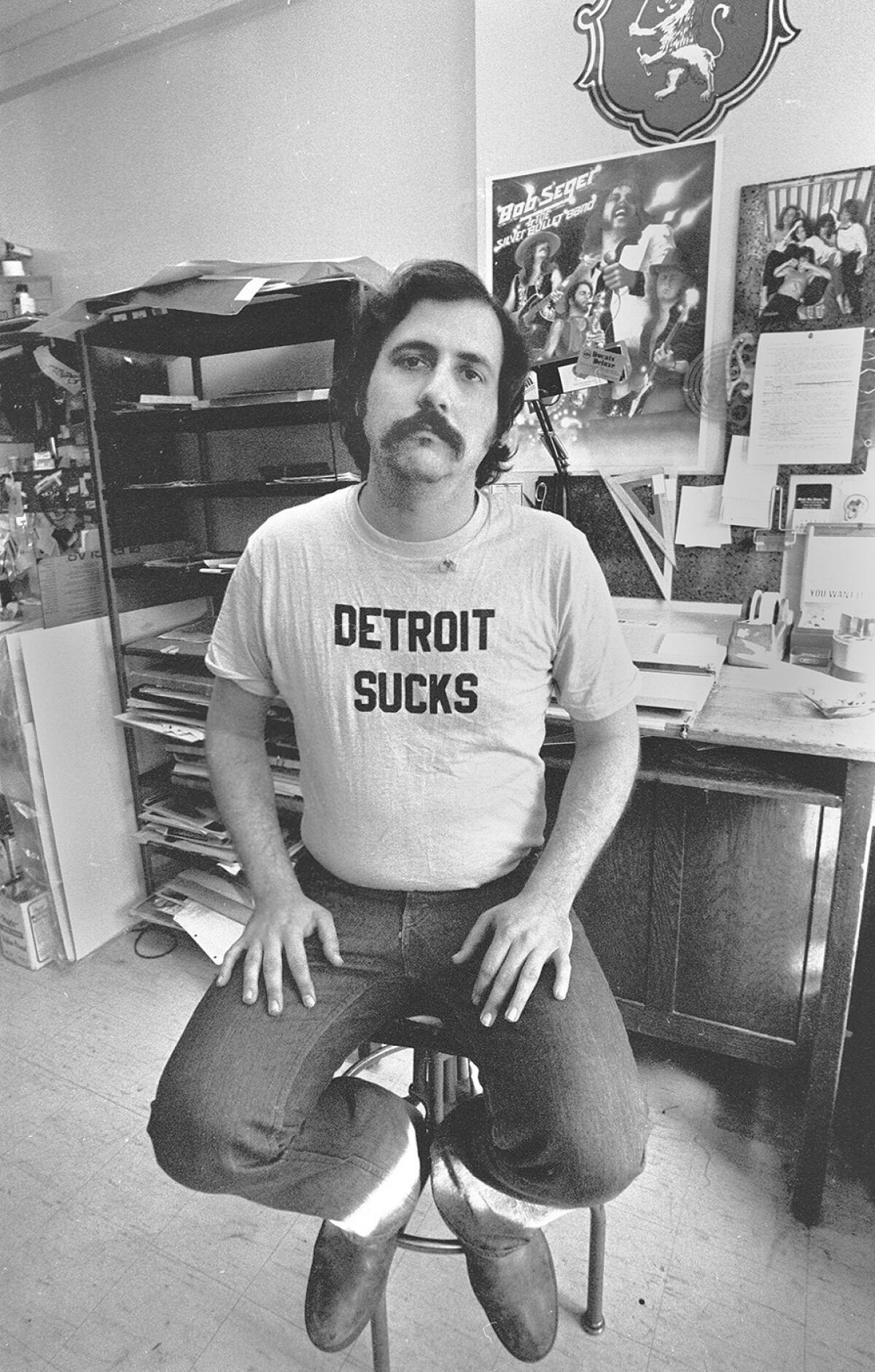
Though he shares a birthday with Bangs, Carnie hadn’t read any of the late critic’s work until recently. The legend only grew in 2000, with Bangs as a character in Crowe’s semiautobiographical film “Almost Famous,” played by Oscar-winning actor Philip Seymour Hoffman.
Despite his exalted position in the rock-critic pantheon, Bangs could be loudly wrong, at least in retrospect, writing dismissive reviews of Bob Marley and Bruce Springsteen, weeping tears of disappointment over the Rolling Stones’ “Exile on Main St.” and calling the proto-punk rockers of the MC5 “ridiculous, overbearing, pretentious.”
None of that mattered. It was enough that Bangs and many of the magazine’s most passionate, uncompromising writers believed in what they wrote. Right or wrong, they could be cutting and hilarious, smart and distinctive, as important to many readers as the stars being covered. As Mick Jagger himself sang, “It’s the singer, not the song.”

“It’s the stuff you love or the stuff you hate,” said Uhelszki. “There is no middle ground. It’s not so much a debate but it really is people pouring their heart out.”
On the Creem website, an essay by first-time contributor Mandy Brownholtz takes aim at the punk band Surfbort, which she calls “a circus of thrift store regulars trying a little too hard to be weird than anything resembling punk.” One could easily imagine that Surfbort is exactly the kind of band that Creem would champion, an ecstatic punk act bringing rock to a new generation of listeners (much as the magazine’s debut issue has a feature on Amyl and the Sniffers). But that isn’t necessarily the Creem way.
Back in 1973, Bangs interviewed his hero Lou Reed and described the groundbreaking rocker in print in the most physically insulting detail, down to his “nursing home pallor.” Seemingly unfazed, Reed came back for more in a series of later articles with the writer. For its part, Surfbort shrugged off the critique with mild irritation and humor, tweeting: “You know we made it big when @creemmag completely roasts you! … Congrats to Creem for the relaunch of your mag. Good thing you know who the real punks are.”
Likewise, Carnie writes a brutal column for the site called “Fartworks” that takes aim at rock stars who hang their paintings in art galleries. His first targets were Paul Stanley from KISS and Brandon Boyd of Incubus, noting, “Celebrity art will always be cursed.”
“I don’t like to do anything in a mean-spirited way,” Carnie said of his approach. “It’s good to think of these people as not your adversaries but like they’re your friends or your family — and you [mess] with your friends and you [mess] with your family. You make fun of them.”

Partly as a result of the COVID-19 outbreak, Creem’s operation isn’t centralized but spread across the country. There is a small editorial office in Brooklyn, while Kramer is based in Columbus; Carnie is in Los Angeles; Uhelszki is in Palm Desert, Calif.; and CEO John Martin (formerly of Vice) is in New Hampshire.
“Everybody says, you’re crazy because magazines are dead,” said Uhelszki. “It kills me that magazines are dead. I want them to resurrect. It’s my favorite form.”
Issue No. 2 is set to arrive in December. “It’s a work in progress,” said Carnie. “What’s the plan? We’re trying to figure it out. I just don’t want to embarrass former Creem staff. I want new fans to like it. We do need some haters, and I’m sure they’ll be coming.”
- Share via
Watch L.A. Times Today at 7 p.m. on Spectrum News 1 on Channel 1 or live stream on the Spectrum News App. Palos Verdes Peninsula and Orange County viewers can watch on Cox Systems on channel 99.
More to Read
The biggest entertainment stories
Get our big stories about Hollywood, film, television, music, arts, culture and more right in your inbox as soon as they publish.
You may occasionally receive promotional content from the Los Angeles Times.











